If you read the recent update from the conservation workshop, you’ll know that fine art conservation student Izzy McKie has been working hard to conserve a late-19th century gilt picture frame from the art store. Keen to see the progress, I caught up with Izzy to find out how it’s been going.
As soon as you walk into the workshop, the difference in the frame’s condition is noticeable. Over seven days (and using a veritable mountain of swabs), Izzy carefully cleaned the frame using solvents and saliva (that’s right, just plain old spit) to clean it ready for repairs and gilding.
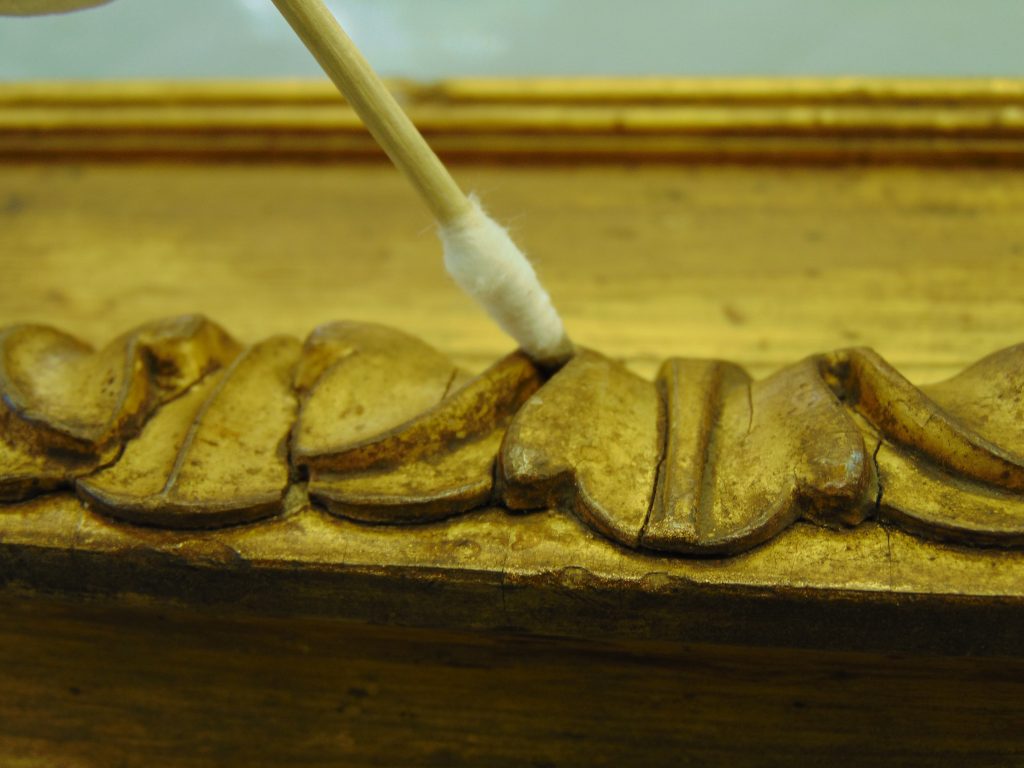
The acetone removed the spray paint, while the enzymes in saliva helped to remove the surface dirt and clean the frame. It’s then cleaned again with clean water (as no one wants to touch someone else’s spit). Sometimes it’s the simplest, most natural methods that work the best!
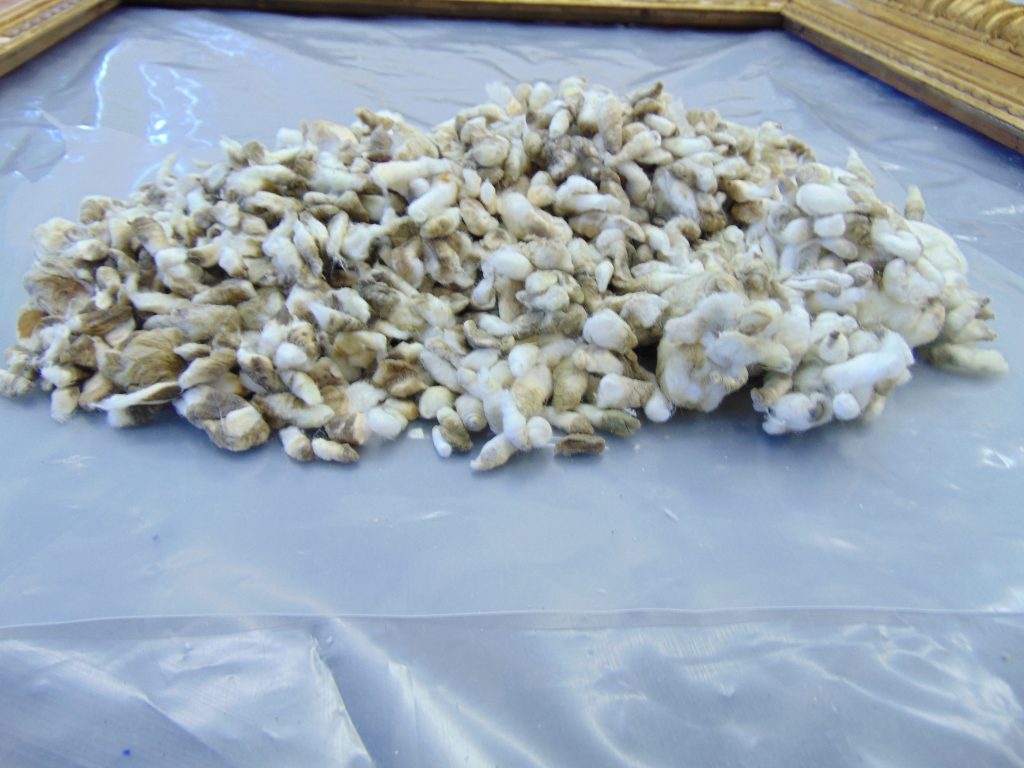
With the frame clean, the next job was to make moulds of the ornamentation, to produce replacements for various missing sections (such as the acanthus leaf design).
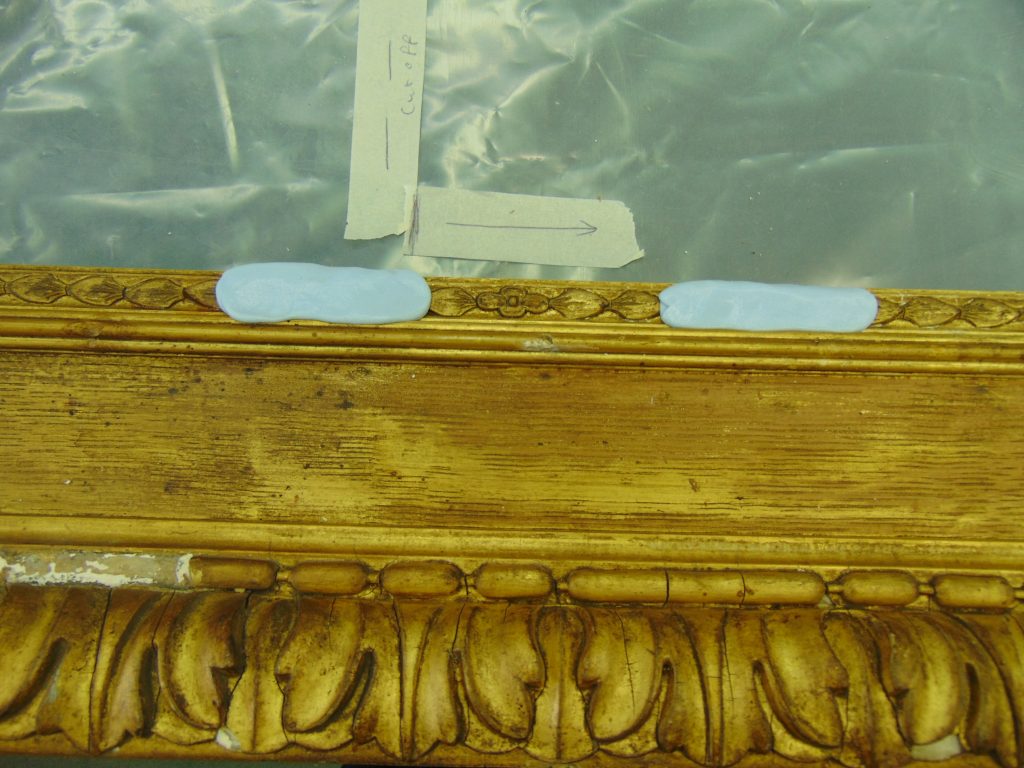
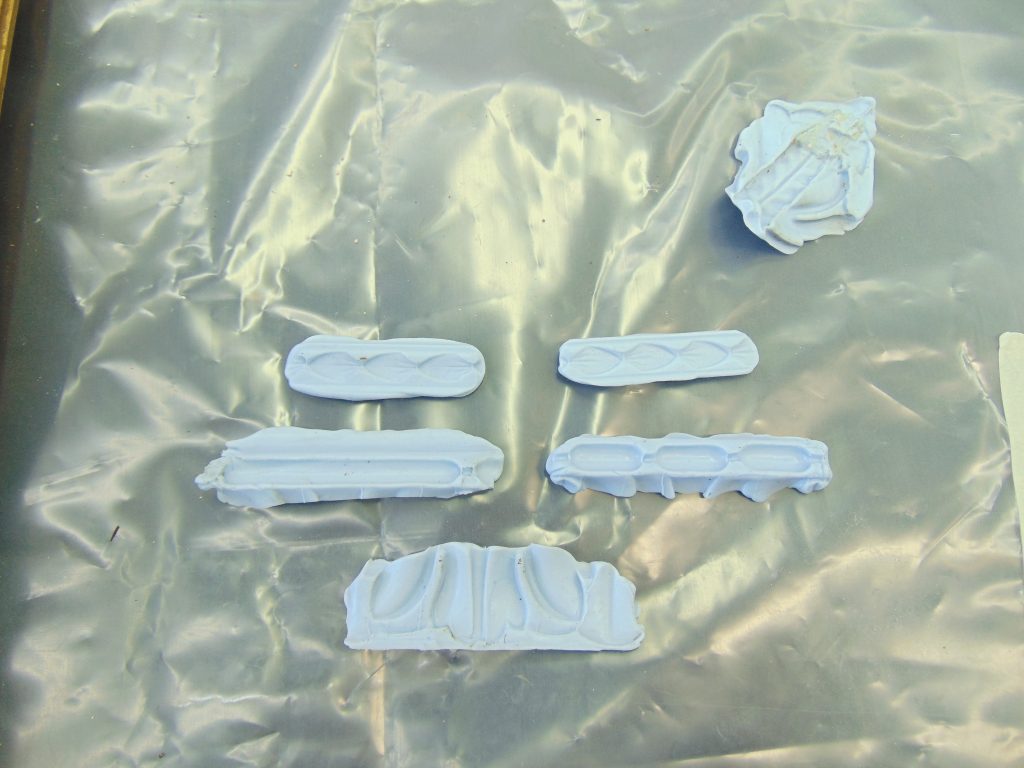
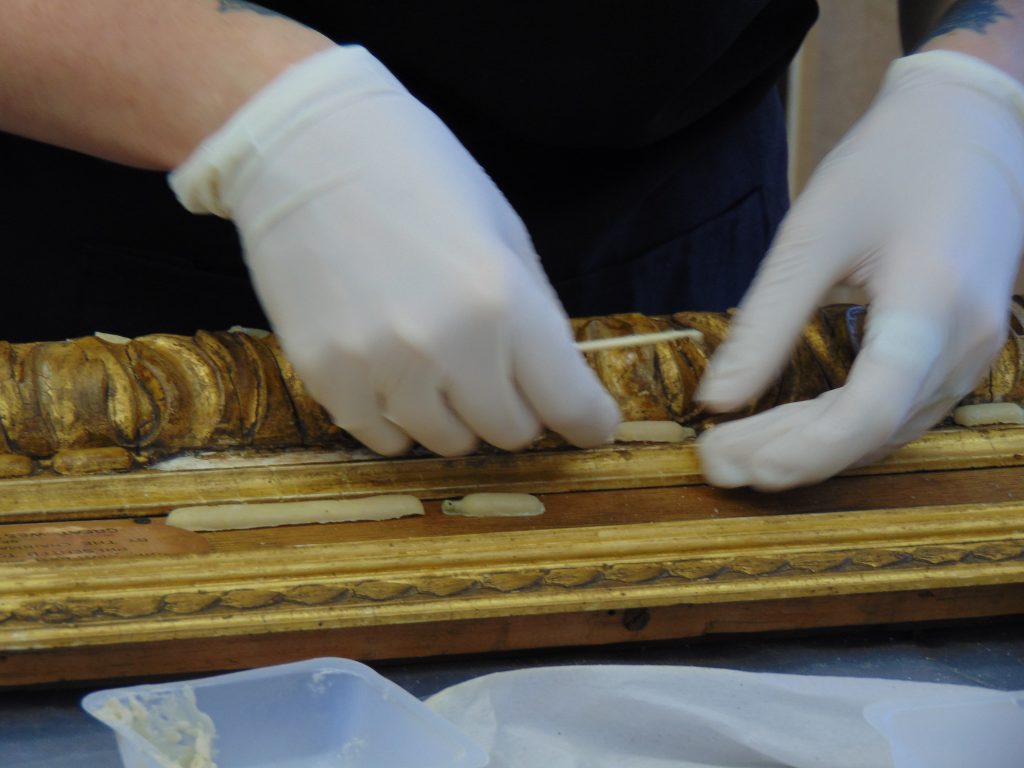
Once in place, these were then toned with a mix of acrylic paints. Any very small bits still missing were filled in with an acrylic putty. Once Izzy is finished with a section, it’s very hard to tell the difference.
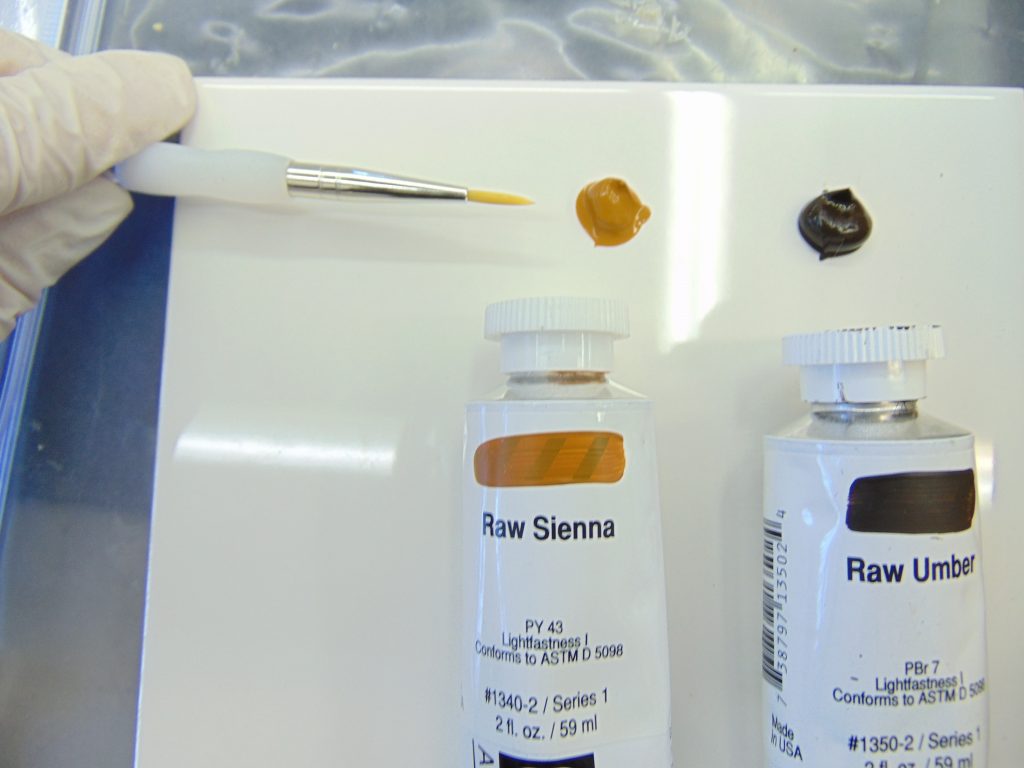

In among all this Izzy’s also reapplied a layer of gesso to areas where it’s missing.
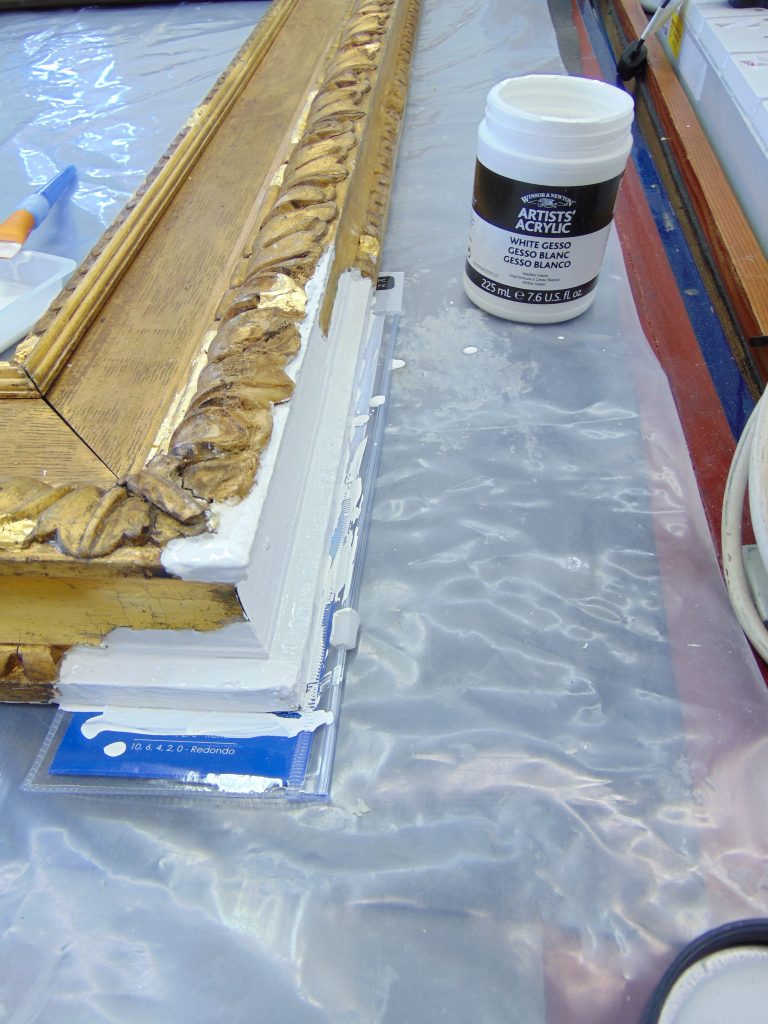
The corners of the frame presented a slightly different problem, as all four were damaged or broken off completely, leaving nothing to make a casting of. In this case, Izzy has used plasticine and dental tools to create a new corner detail which can then be cast in the same way as the leaves. This is part imagination and part detective work, using reference to other frames by the same makers to create something plausible for the frame’s period and style.
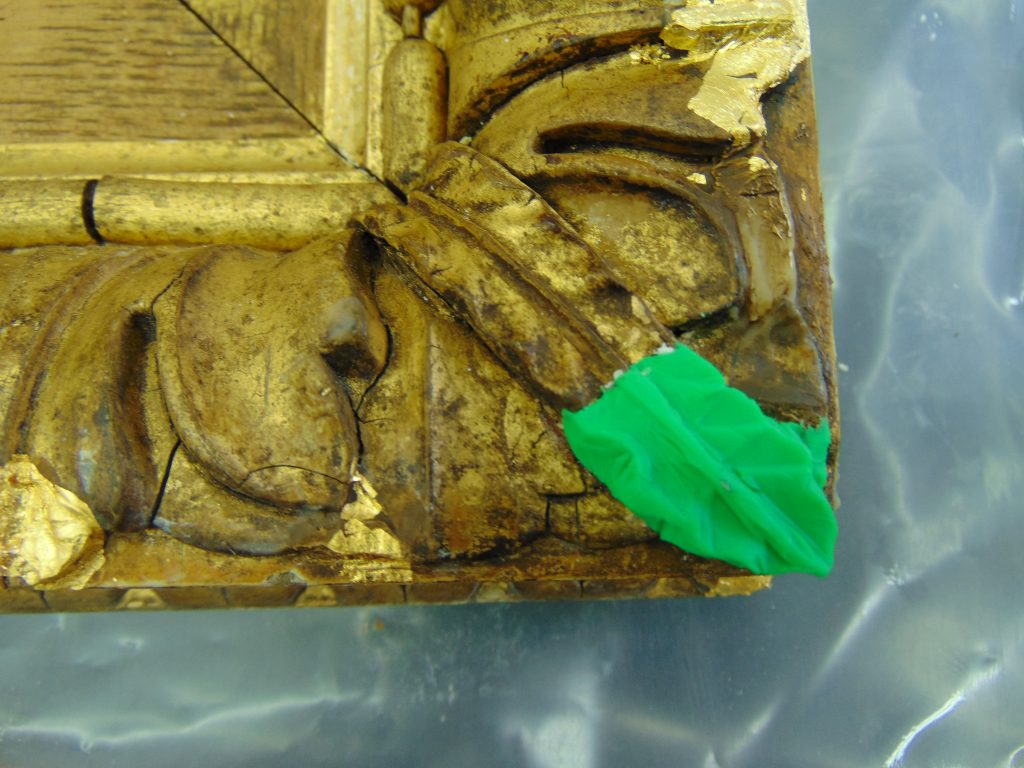
With that done, the really delicate, fiddly job was next—gilding the frame using 23 ½ carat gold leaf. This involves applying a glue size which is then used to flood the surface, then applying the gold leaf straight away using a special squirrel-hair brush (gilder’s tip).

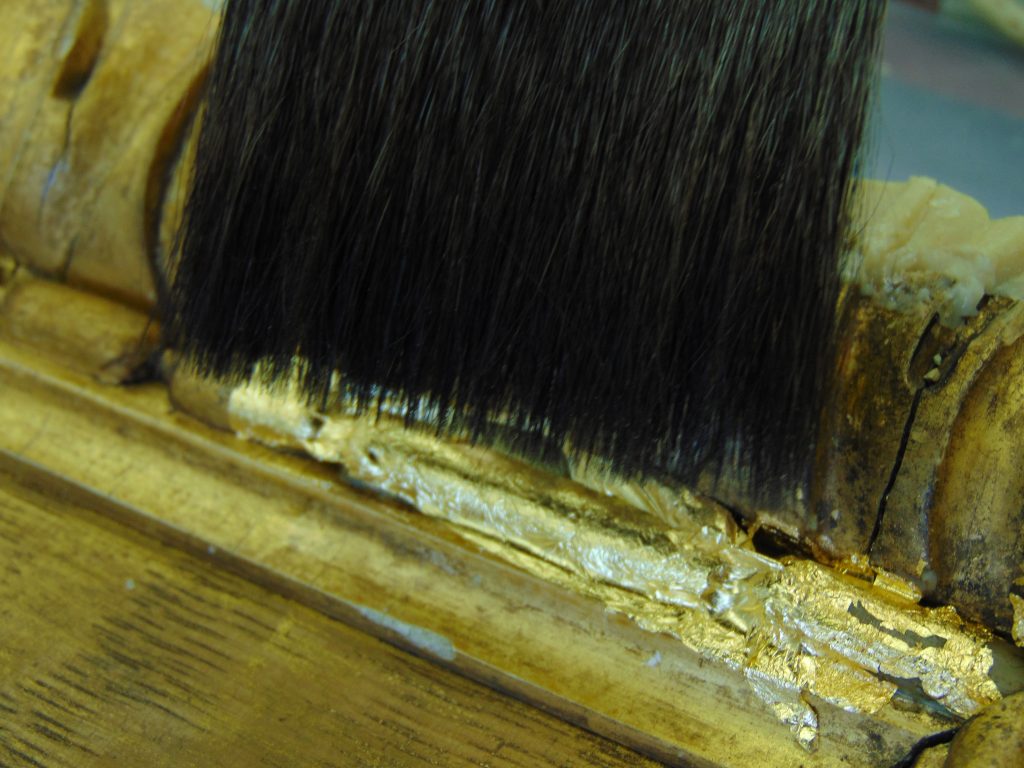
The leaf has to go on flat, making this an incredibly delicate task! Once this is all done, the gold leaf will be toned using watercolours and non-yellowing varnish. The aim isn’t to make the frame look brand spanking new, but rather to conserve it so that it survives as long as possible.
Possibly the most intriguing thing about the whole process is the variety of tools and skills used. The skills required of the conservator of picture frames span a number of trades, including furniture conservation and gilding. When complete, the repairs will be visible close up, so that the next conservator can see where they are, but to the general visitor the finish will look seamless.
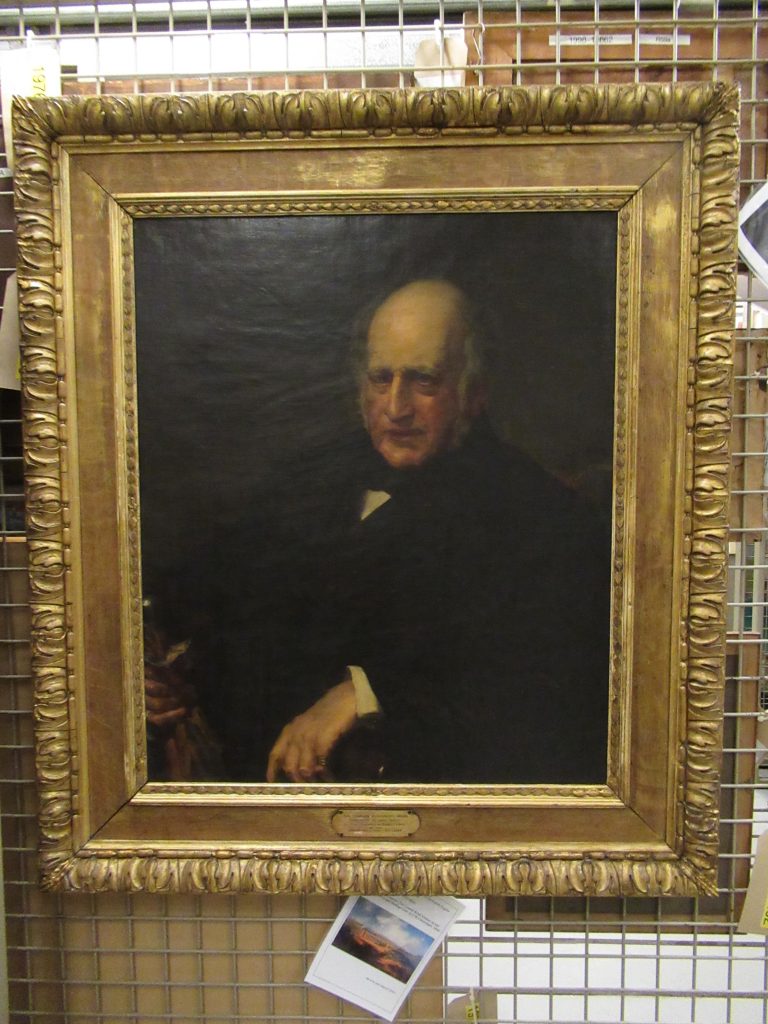
For more insights from the workshop, you can explore all our posts about conservation work at the museum.

